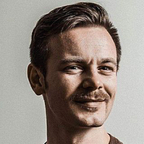New American Color Fujifilm Recipe
Ever since I discovered the work of Joel Sternfeld I’ve been obsessing over how to achieve a similar look in-camera. Here’s my take on it.
I think I have gotten as close as is possible. Digital is not film, but given the level of control we get with Fujifilm film simulations and in-camera processing we can get pretty close.
Recipe and examples at the bottom. Find more examples on my Instagram.
Distilling Sternfeld’s Look
Joel Sternfeld is one of the photographers grouped under the term New American Color Photography; the movement and exhibition in 1976 that made color photography accepted as art photography. The others being William Eggelston, Stephen Shore and Richard Misrach.
I’ve read that Sternfeld’s early work was shot on Kodachrome. However I’m more interested in his later large-format work from the book Stranger Passing, which appears to have softer color and contrast.
I’m no film expert, but I wanted to replicate the look nonetheless. After quite some time of thorough…
